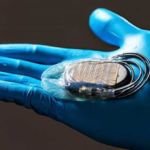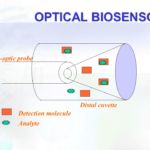Artificial organ printing or 3D organ printing is described as the process to craft compatible organs that can be fully integrated with the human body and perform regular tasks of an organ. Examples of 3D-printed organs include the heart, liver, kidney, lungs, etc.
The 3D organ printing process makes use of similar techniques that are utilized in conventional 3D printing applications. Biocompatible plastic acts as the base material through which 3D organs are crafted. The base material is fused with live human cells for which the organ is being printed. Artificial organ printing makes use of sophisticated hardware and software environments which make the entire market highly innovative.
The entire 3D organ printing process follows a layer-by-layer architecture which involves the layering of human cells, where one layer for an organ is printed and additional layers are printed on top of that. The 3D organ printing market has the potential to transform various verticals such as research designs, pharmaceuticals, and the entire organ transplant procedure.
Different Forms:
Based on the material used the market is divided into different parts which include hydrogels, extracellular matrices, living cells, and other biomaterials. According to the procured market database, the living cells segment has obtained a larger share in practical environments. This is due to accelerated analysis in stem cell research and increased trust factor on these materials.
The market database also states that the 3D organ printing market has relied heavily on the use of innovative 3D bioprinters. These bioprinters act as a dedicated platform through which the software modules can be uploaded and finally print the required organ. Based on the component utilized the market is divided into two broad frames which include 3D bioprinters and bio-inks.
The business outlook for 3D bioprinters has witnessed high optimism due to rapid advancements in terms of technology. The 3D bioprinters vertical is further sub-divided into micro extrusion bioprinting, inkjet 3D bioprinting, laser-assisted bioprinting, and magnetic 3D bioprinting. Inkjet 3D bioprinting has experienced a greater share in the artificial organ printing market. Magnetic 3D bioprinting is expected to capture a larger share for being more cost-effective.
Research organizations and academic institutes, biopharmaceutical companies, hospitals constitute the end-user utilization. Research organizations have used artificially printed organs to project more realistic environments and develop improved research processes. The increased investment in research and growth in research infrastructure can be studied through secondary research data procured from market intelligence tools.
According to the market database, biopharmaceutical companies have also experienced a greater share in the market as most of the on-demand 3D printed organs are outsourced to them. They have in-house advanced and dedicated machinery and expertise to carry out the projects.
Varied Applications:
Extensive use of 3D printed organs is found in organ failures such as the heart, liver, kidney, etc. which require immediate treatment and replacement.
The use of living cells has helped to craft artificial bones and tissues for the human body. These cells can easily adapt to different environments (human bodies) and develop the required 3D structures.
According to the market database, further applications are witnessed in the academic and research domains. The 3D-printed organs are utilized to test different drug treatments under specific conditions. This has helped the researchers to eliminate the toxic drug in the early stages and avoid them undergoing costly clinical trials.
Advanced research activities have made use of artificial mini-brains to better understand the diseases related to it such as Alzheimer’s disease and deadly cancers such as glioblastoma. The use of 3D-printed organs has also accelerated treatment in chronic diseases such as cancer, renal diseases, respiratory diseases, etc.
Apart from practical application in organ transplants for humans, further use cases are witnessed in animal treatment as well. The technology utilized for 3D organ printing is also used for skin printing, bone & cartilage printing, blood vessel printing, and other clinical applications.
Growth Factors:
Technological advancements in 3D printing machinery and greater adoption are expected to drive growth in the 3D-printed organ market. Increased innovation has led to the craft of artificial tissues and organs with minimal errors. This has revolutionized the healthcare ecosystem around the world.
Market research reports state the key market players have started to invest in advanced R&D techniques such as regenerative medicine, organ fabrication, tissue engineering, drug therapies, and stem cell therapies. This is done to provide better patient care and customized medical treatment. The strategic improvements in the medical sector due to the presence of key players in a region can also be studied through Global Market Database. The free market data procured from this market intelligence platform is updated every quarter.
For instance, a major company in France in the year 2018 launched a 3D bio-printed skin model. The total human skin model is made by bioprinting primary human collagen and fibroblast.
The market database states that increased funding activities by government organizations have led to improved participation in this market. Constant policies to aid the development of healthcare infrastructure are expected to attract different manufacturers in emerging economies. Further factors that have contributed towards the change in business outlook include the long waiting time to obtain a regular organ transplant, limited organ donors, and the aging population. The business outlook is expected to remain buoyant due to such factors.
COVID-19 and Other Restraints:
The accelerated innovation in this market has led to an increased demand for skilled professionals who can manage the complex procedures involved in these activities. Market research reports state that a lack of skilled professionals is assumed to act as an obstacle as the entire 3D organ printing requires constant monitoring to reduce errors. The use of advanced machines and software modules makes the entire procedure capital intensive. Stringent regulations and testing procedures are time-consuming and have acted as a barrier.
Other factors include limited enthusiasm to affirm treatments offered by the 3D-printed organs market. This is due to different biosafety concerns. Also, the source of substances used to develop 3D machines and related products have concerns related to waste management.
According to the market database, the COVID-19 induced pandemic caused a slight decline in the 3D printed organs market. This was due to the reluctance of patients to have physical operations during the period. Market research tools state that the supply-chain constraints on the manufacturing side have led to decreased orders and fabrication. The research activity section has remained resilient to the impact of COVID-19 and is expected to drive business recovery in this market.
Region Wise Analysis:
The North American region has endured a greater share in the market due to superior technological and research capacity. Sturdy regulatory and healthcare infrastructure has offered reliable applications in this market.
Major players in the market are more prone to forging partnerships, initiate mergers and acquisitions. This is assumed to boost business recovery in this region in the post-COVID scenario. The U.S Food and Drug Administration (FDA) has highlighted two regulations that help to produce safe and qualified artificial organs. The Good Manufacturing Practices (GMPs) are for the facilities that print organs and the Good Tissue Practices (GTPs) are for the facilities that extract and handle human cells.
Europe is another region that has contributed to the growth of this market. For instance, a major company in Sweden partnered with a research institute in the year 2019 to produce an innovative 3D printing technology. The 3D bioprinter generates a complex tissue-like structure that can help to curb the positioning of the individual stem cells used in the process.
The Asia-Pacific region is poised to obtain a greater share in the 3D-printed organ market. This is due to enhanced demand for organ transplants in this region and global market players have begun to extend their presence in this region. China and India are assumed to lead the business recovery in this region due to increased public investments in the development of healthcare infrastructure and research-related activities.


